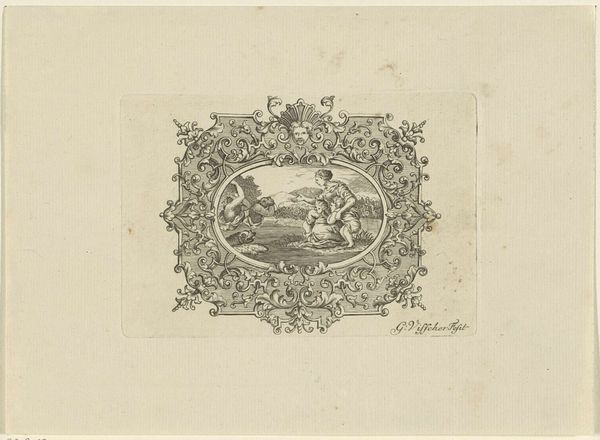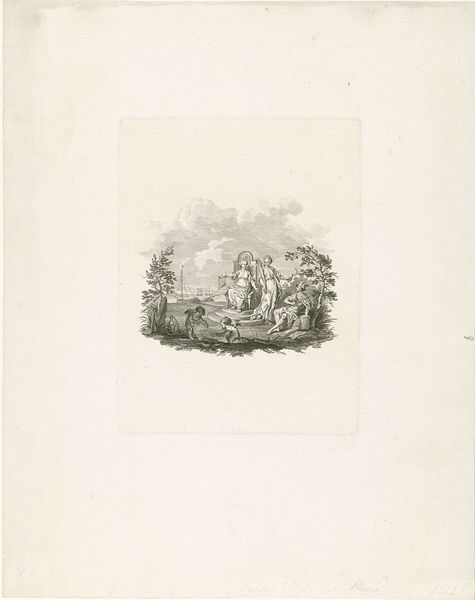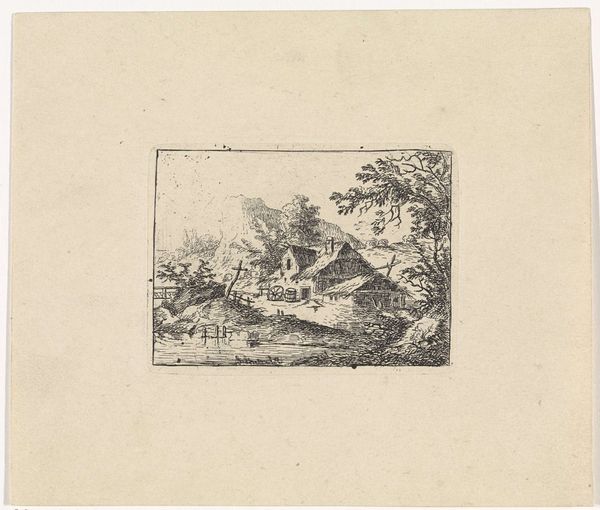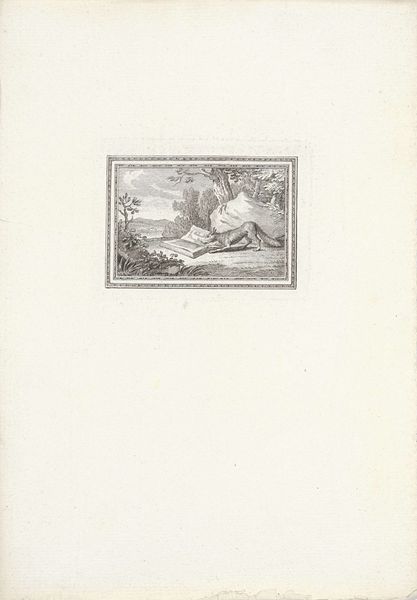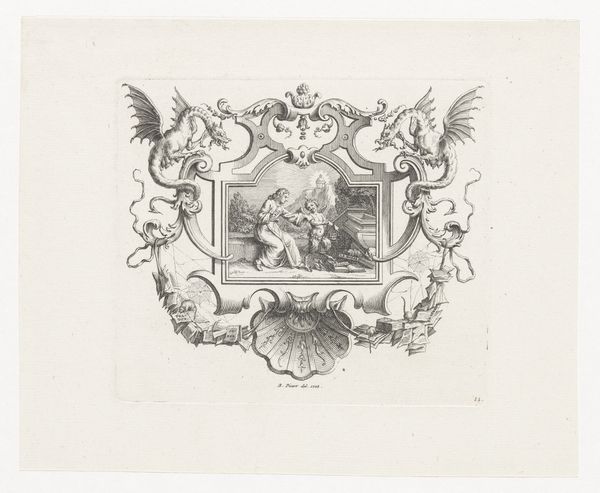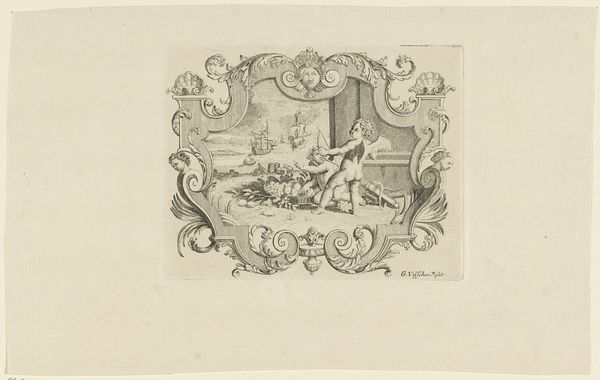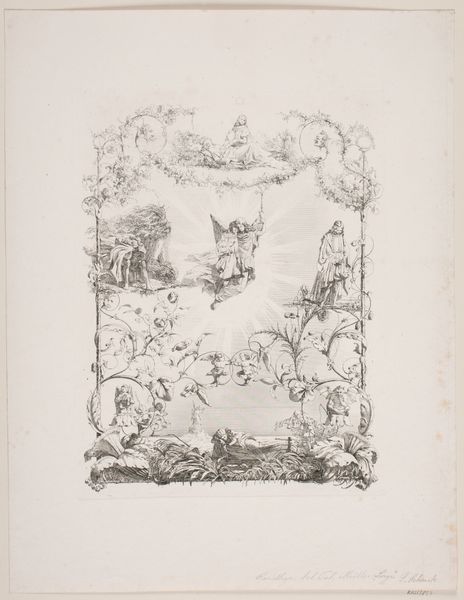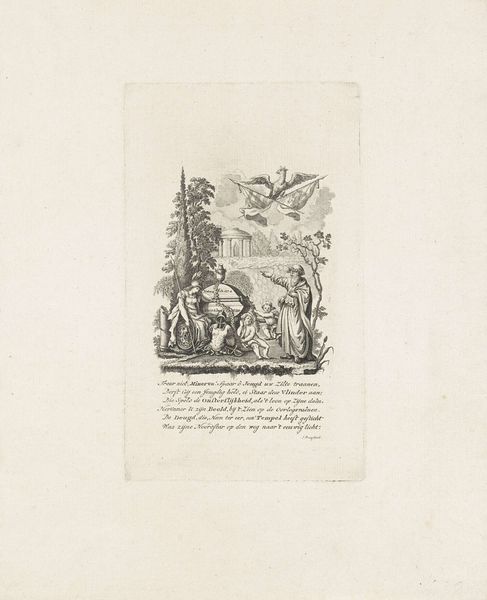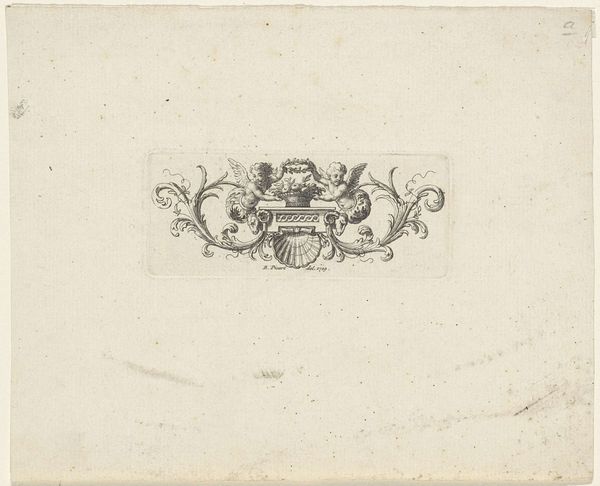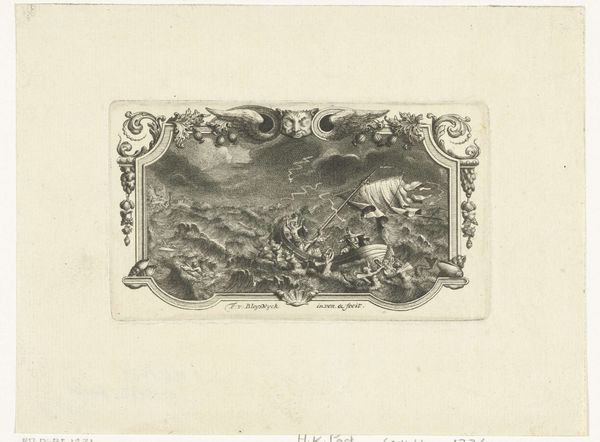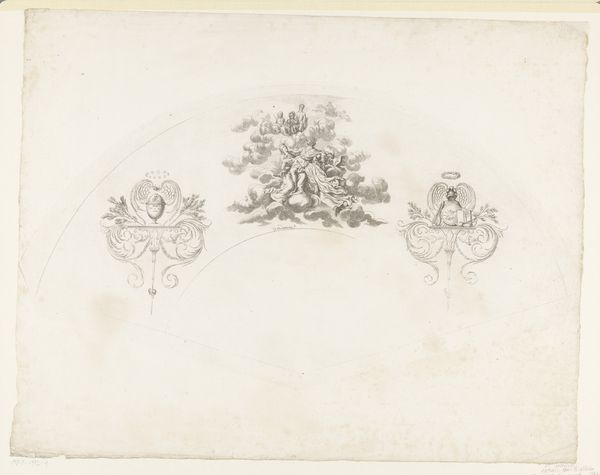
Dimensions: height 85 mm, width 113 mm
Copyright: Rijks Museum: Open Domain
Abraham Delfos made this delicate etching, Allegory on Peace with Three Putti in Cartouche, in the 18th century. Etching is an intaglio printmaking technique, where a metal plate, traditionally copper, is coated with a waxy, acid-resistant substance called a ground. The artist then scratches an image into the ground, exposing the metal. The plate is immersed in acid, which bites into the exposed lines, creating grooves. The ground is removed, ink is applied to the plate, filling the etched lines, and the surface is wiped clean. Finally, the plate is pressed onto paper, transferring the ink and creating the print. The image's fine lines and subtle tonal variations display Delfos's skill, reflecting the labor involved in preparing the plate, etching the design, and printing the image. It’s a process that involves expertise, time, and physical effort, contrasting with today’s digital image production. Thinking about the work and the cultural and social context in which it was made reminds us that printmaking was an essential means of communication and artistic expression, long before photography and digital media.
Comments
No comments
Be the first to comment and join the conversation on the ultimate creative platform.
